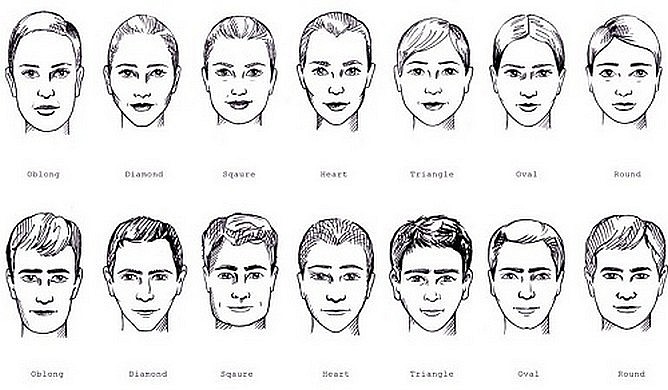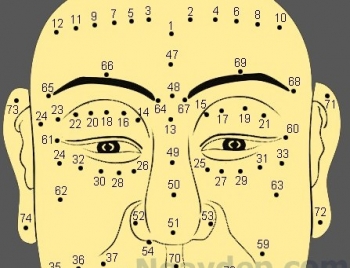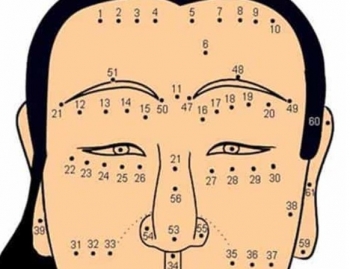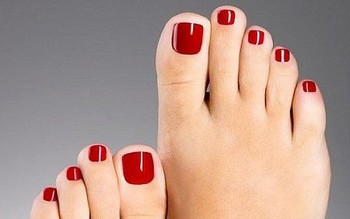What is Physiognomy: History, Purpose, Meaning and Mysteries in Forecasting the Future
| Contents |
What is Physiognomy?
Physiognomy is a scientific subject that uses physiognomy based on physical characteristics, appearance, language, gestures and gestures... to predict personality, work, career as well as A person's future is through the body parts, from the body, external appearance to internal temperament and personality.
Since ancient times, Eastern people's physiognomy, also known as physiognomy, is based on reading the horoscopes of men and women.
Physiognomy, derived from the Greek words “physis” (meaning “nature”) and “gnomon” (meaning “judge” or “interpreter”), refers to the practice of assessing a person’s character or personality based on their outer appearance, especially their face.
Through physiognomy, physiognomy experts can predict that person's behavior and achievements in life.
Sometimes success or failure in a person's life is not achieved by trying, Eastern people also believe that it is related to destiny.
According to Eastern or Chinese horoscopes, the purpose of basic physiognomy, reading physiognomy through date of birth, and physiognomy is to help people find good, avoid evil, and aim to understand and correct themselves.
Every person born has a birth time, date of birth, month of birth, and year of birth, which is the scientific basis for determining human destiny. The impact of nature, along with water and house luck, also affects human destiny and life.
After all, physiognomy is like a science of prediction mixed with a bit of idealistic mysticism.
Learn Everything about Physiognomy Here!
 |
| What is Physiognomy |
What is Chinese Physiognomy?
Human physiognomy has existed for thousands of years in China. The art of physiognomy is said to have originated during the reign of Emperor Xuanyuan. Physiognomy and horoscopes are the most influential.
From Confucius to later Confucian scholars, many people have researched and mastered physiognomy. At the end of the 3rd century BC, physiognomy was closely associated with Chinese life, appearing in many ancient chronicles written to this day.
What is the Purpose of Physiognomy?
Chinese and Asian physiognomy and physiognomy is a method of observing and looking at external features to read the lifetime horoscope of men and women, including: face reading, hand physiognomy, and bone physiognomy. , human physiognomy, mole physiognomy, eyebrow physiognomy, husband and wife physiognomy, rich and poor physiognomy,... from which you can see inner personality, emotions, family, predict good and bad destiny .
Physiognomy all have the same view: temperament is the cause, actions are the results. Therefore, according to physiognomy experts, reading feng shui to find ways to change appearance can only change partially or in stages but cannot change destiny.
Physiognomy Concept
 |
| Face Reading |
Character Assessment
Physiognomy is the study of facial expressions, features, and general appearance to infer inner qualities about a person. This theory was investigated by Greek scholars and philosophers who thought that a person's nature could be revealed through outward manifestations.
Historical Context
The "Samudrika Shastra," which was created in ancient India by Siddhars, connected physical attributes to personality traits. Chinese physiognomy, or "mianxiang," has roots in the country's prehistoric past. Athens began to see signs of a developed physiognomic theory by the fifth century BC, and scholars such as Zopyrus made significant contributions to the field.
Controversy and Pseudoscience
Although physiognomy was once widely accepted, its associations with vagrants and mountebanks caused it to lose favor in the 16th century. Though Johann Kaspar Lavater brought the 19th century back into vogue, the practice ultimately faded.
It even provided the foundation for scientific racism in the 19th century. Despite enduring popular belief, physiognomy is now regarded as pseudoscientific because of its unsubstantiated claims. Rekindled interest has been sparked by recent developments in artificial intelligence, particularly in relation to facial recognition technology.
Scientific Relevance
Modern scientists research the dangers of physiognomy, including privacy issues with facial recognition software. Physiognomy and "anthroposcopy" are terms that are occasionally used interchangeably.
In conclusion, physiognomy has a long history, but its current standing in science is still debatable. Whether it's a thing of the past or a topic of recent research, the practice never fails to pique interest and spark debate.
Is Physiognomy True?
We often ask ourselves, "Should we believe in physiognomy?"
Reading physiognomy is not a mystical, paranormal or superstitious observation, but is completely based on scientific conclusions. Because each person's life is predetermined. Physiognomy exists because it wants to tell people that they should live according to nature. The good and bad things we encounter are caused by causes, not by chance.
All dynasties and kings in China and other Asian countries from ancient times until now, from the nobles to the common people, like to read physiognomy to know the future, welcome good and avoid evil. Today in many Asian countries, even officials, businessmen, intellectuals... often rely on physiognomy or fortune telling.
Especially today's politicians in many East Asian countries are also very fond of face reading because if they meet a fortune teller, they will give useful advice such as doing many good deeds, accumulating virtue, and so on. The new political life lasts forever.
In Conclusion
Physiognomy, a practice that has been extensively utilized in both Eastern and Western societies for millennia, serves as a comprehensive indicator of an individual's personality, as well as their overall well-being, health, and other relevant factors.
Physiognomy, encompassing the practice of face reading, has been a prominent and enduring topic within human society. Astrology is the practice of analyzing individuals' physical appearance in order to assess and forecast their future outcomes and fate. This longstanding tradition, rooted in millennia of historical knowledge, facilitates individuals' comprehension of character, personality, and fate, irrespective of their socioeconomic status.
Despite ongoing controversy, the belief in physiognomy remains valid in numerous communities and is experiencing a notable increase in strength. Amidst a volatile world characterized by peril, peril, and unpredictability, the craft of palmistry continues to evolve.
 Physiognomy: Moles on Men's Face Reveals Personality and Destiny Physiognomy: Moles on Men's Face Reveals Personality and Destiny Without the assistance of a physiognomy specialist, KnowInsiders helps you decipher a man's personality and destiny based on the location of his moles on his ... |
 Physiognomy: Moles on Women's Face Reveals Personality and Destiny Physiognomy: Moles on Women's Face Reveals Personality and Destiny Based on physiognomy, KnowInsiders can help you read a woman's personality and forecast her future based on the location of her facial moles. |
 Read Women's Palms For Career with 5 Simple Tips Read Women's Palms For Career with 5 Simple Tips Can we rely on the palm lines to know which jobs we should choose? In this article, KnowInsiders guides how to read palmistry for women. |
 Physiognomy: What Are Lucky and Wealthy Feet? Physiognomy: What Are Lucky and Wealthy Feet? Every bodily part of a person is connected to their life in physiognomy. Let's examine the traits of wealthy feet by looking at their appearance ... |



























